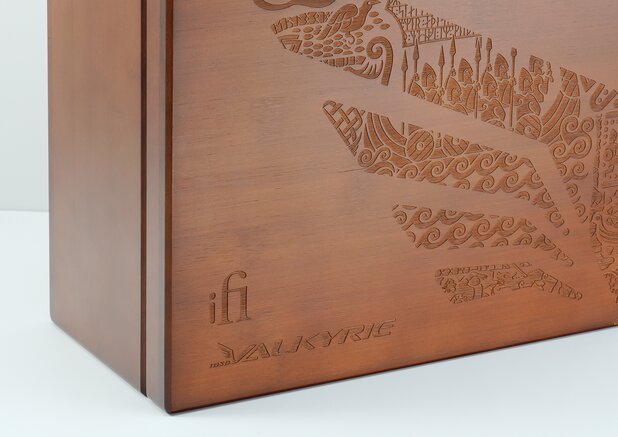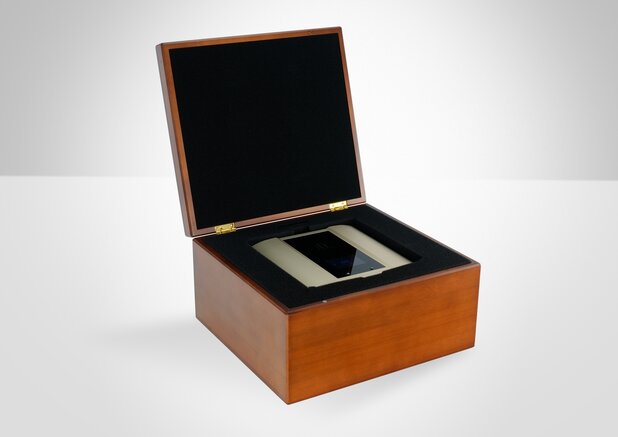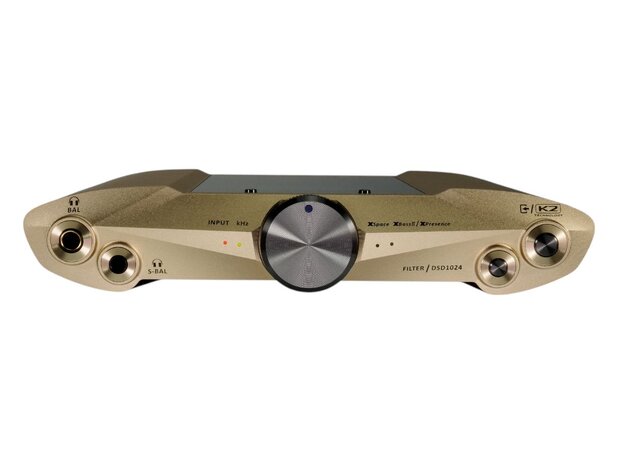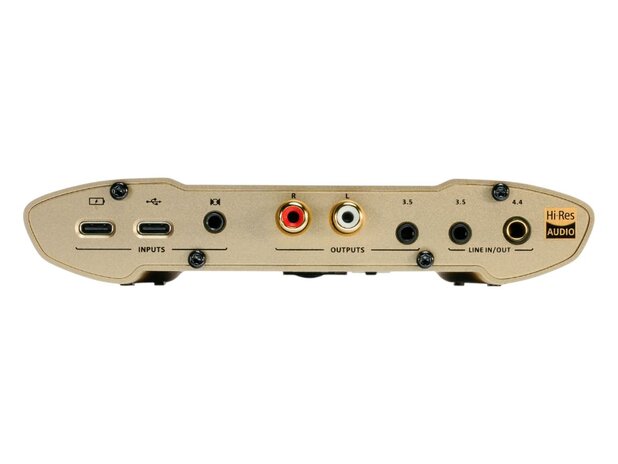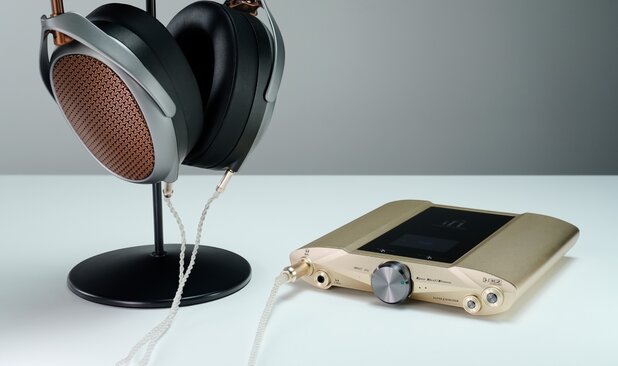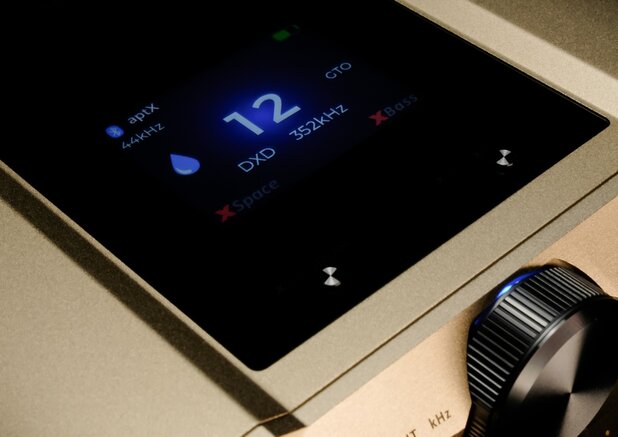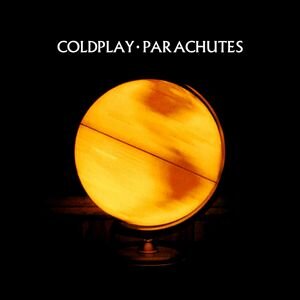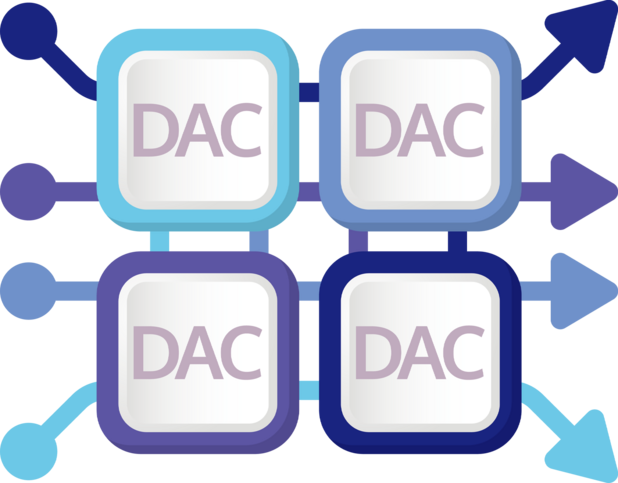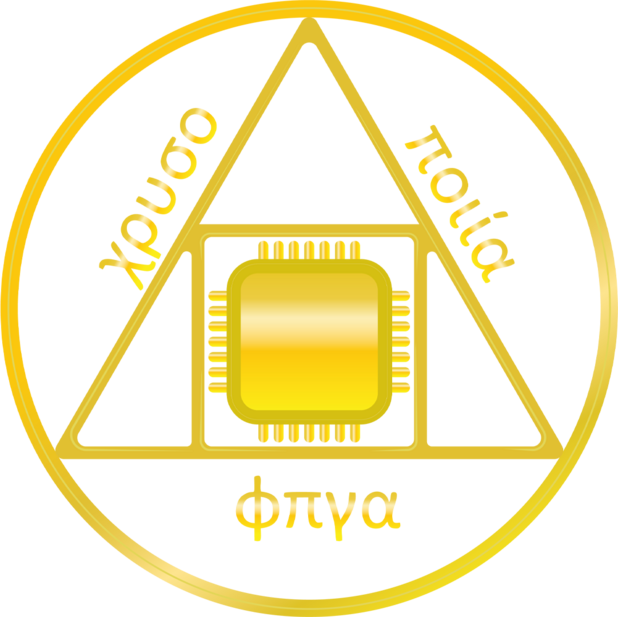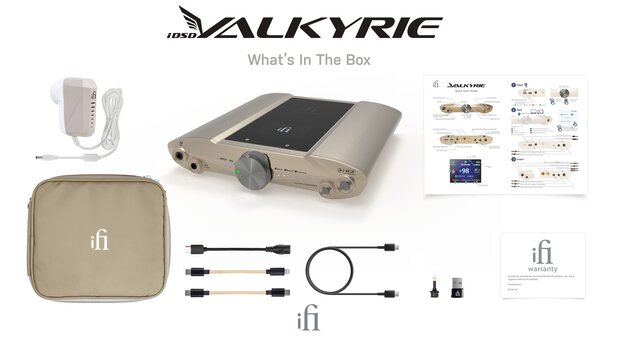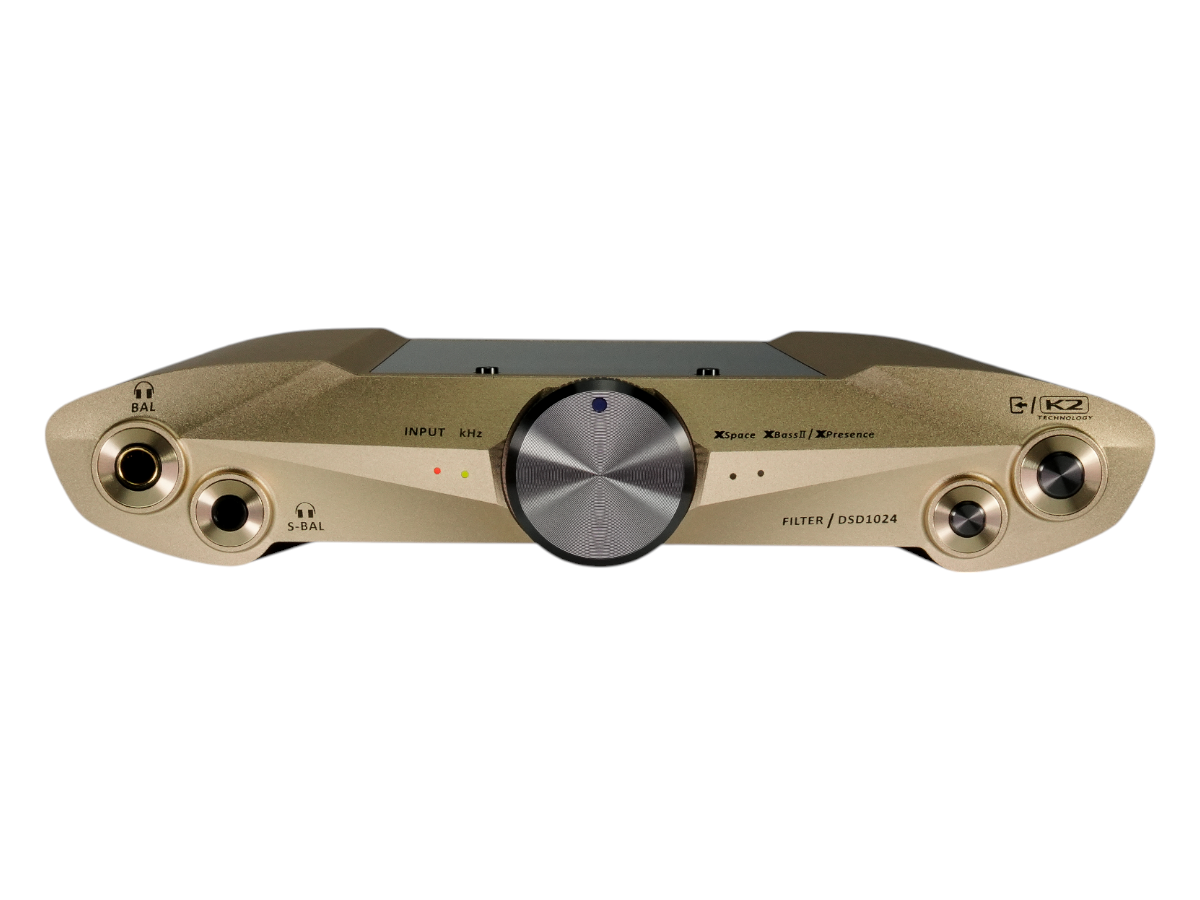








iFi
iDSD Valkyrie Hi-Res Portable Headphone Amp DAC
$1,539.00 USD
Features
Studio grade Crysopeia FPGA Remastering Engine
Ultra-res digital audio – 32-bit/768kHz PCM, DSD512
Features JVCKENWOOD’s K2HD Technology
Up to 5,700mW max. peak output power
Video
What's in the Box?
Warranty
Experience your favorite tracks with a level of musicality and emotional depth made possible by the iFi Audio iDSD Valkyrie Hi-Res Portable Headphone Amplifier DAC/Preamplifier. The portable USB DAC puts professional-grade mastering technology in your hands, transforming how you listen to music with a quad-DAC architecture, proprietary DSD remastering, and precision analogue processing.
Find your sonic Valhalla with the iFi Audio iDSD Valkyrie–where mastering meets mobility with exceptional sound quality.
Become The Master

The iFi iDSD Valkyrie isn't just another Portable DAC/Amp combo–it's a personal mastering studio at your fingertips. With proprietary DSD Remastering technology, K2HD processing, and six custom digital filters, you'll hear familiar tracks in ways you never imagined possible on your home audio system or streamers. Backed by thunderous 5,700mW peak output, quad-DAC architecture, lossless Bluetooth DAC functionality, and 18 hours of battery life from its robust power supply, the Valkyrie stands unrivaled in the high-end portable audio space alongside other products like the iFi Audio Hip DAC 3, xDSD Gryphon, ZEN Blue 3, ZEN CAN 3, Neo iDSD, and the GO series including the GO Bar Kensei and iFi GO Link.
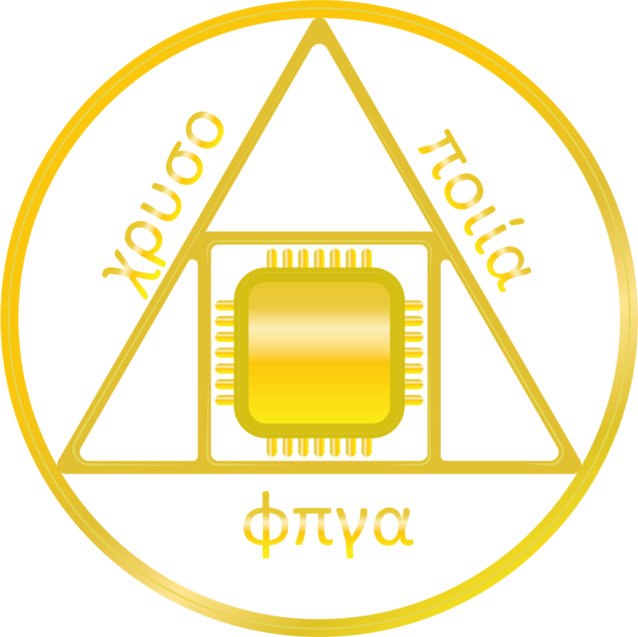
Professional-Grade DSD1024 Remastering
The Valkyrie brings this once-exclusive processing to the hands of audiophiles via a custom-coded FPGA, to transform any file and ultimately make music sound closer to a professionally remastered recording.

JVCKENWOOD's K2HD Technology
K2HD restores rich, natural harmonics to lifeless digital recordings. Advanced high-frequency extension reduces overtones by 22kHz, delivering audio quality close to the original master.
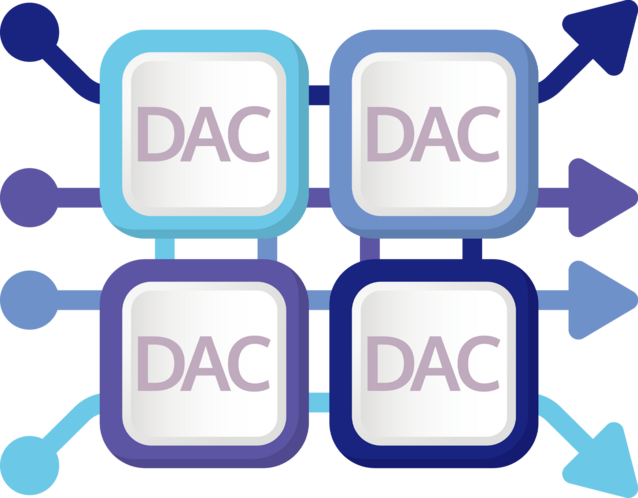
Quad DAC Architecture
Powered by quad-stack of Burr Brown Digital-to-Analog Converters, the Valkyrie achieves unmatched linearity and impeccable channel separation. The Valkyrie offers the dynamic punch and slam of the Philips chip, but with breathtaking detail.

Up to 5,700mW Max. Peak Output
The Valkyrie boasts an extraordinarily powerful headphone amplifier, capable of delivering up to 5,700mW of maximum peak output, measured to the highest standards by iFi Audio.
Sculpt Your Soundscape
Inspired by the artistry of professional mastering engineers, the Valkyrie uses iFi Audio's award-winning DSD Remastering algorithm, powered by a custom-coded FPGA, elevating your music to new sonic heights. Similar to the technology used in Sony's legendary mastering studios, this professional-grade DSD1024 Remastering transforms any file by increasing resolution and reducing distortion, bringing your collection closer to professionally remastered quality whether using IEMs (In-Ear Monitors) or full-size headphones.
These powerful technologies can be combined with six user-selectable digital filters, giving you more ways to experience your favorite music and discover the best for your ears. Complementing its digital customization suite are iFi Audio's all-analog, renowned XBass II, XPresence, and XSpace processing modes:
- XBass II restores low-end presence for open-back headphones or bass-light recordings that crave a bass boost
- XPresence adds midrange presence to your favorite recordings, making them sound more immediate and engaging
- XSpace expands the soundstage, recreating the dimensional quality of live performances

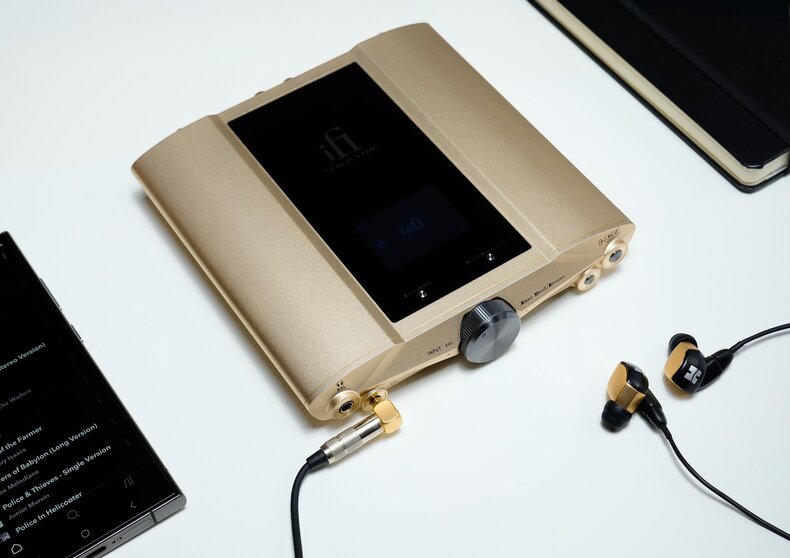
Power That Endures
Four 5,000mAh lithium-iron batteries (20,000mAh total) power the Valkyrie's advanced features while ensuring your music remains free from electrical interference. Not only do batteries provide sound free from electrical interference and noise, but they do so with enough life to last up to 18 hours of playback on a single charge–enough for a flight from London to New York–and back, outperforming the ultraportable iFi Audio GO Blu.
Engineering Excellence
At the heart of the Valkyrie lies iFi Audio's advanced quad Burr-Brown DAC configuration–a hybrid multi-bit design inspired by the legendary Philips TDA1541A. This architecture blends eight pairs of differential signals to capture the magic of classic multi-bit sound while delivering superior low-level detail, rivaling the iFi Audio Zen DAC 3.
For ultimate signal integrity, iFi Audio has isolated the analog path on a dedicated board, completely separate from digital components. Talk about the perfect audiophile-grade component with multiple inputs including USB-C.
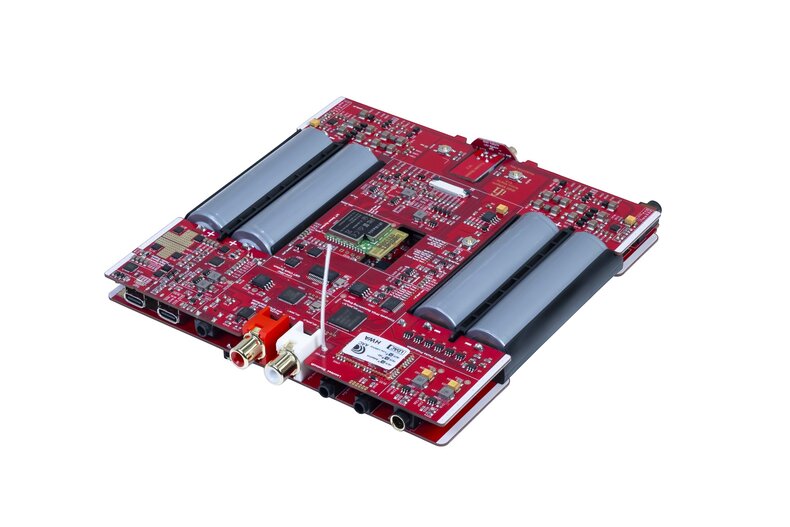
Wireless Without Compromise
The Valkyrie wouldn't be the ultimate portable hifi component without wireless functionality. Experience true wireless audio with Qualcomm's flagship QCC518x chipset and aptX Lossless codec support. With bitrates up to 1,200kbps, you'll enjoy CD-quality sound without data loss–a wireless first.
For high-resolution streaming, the Valkyrie supports 96kHz/24-bit transmission via LDAC and LHDC/HWA codecs, plus full xMEMS compatibility for next-generation audio experiences.
The Valkyrie vs. The Chord Hugo 2
How does the iFi Audio iDSD Valkyrie compare to its industry rival the Chord Electronics Hugo 2 DAC Headphone Amp? The Chord Hugo 2 DAC Amp is renowned for its clarity, detail, and accuracy. Sonically, the Valkyrie and Hugo 2 differ drastically with the Valkyrie delivering exceptional midrange performance and an overall more musical, dynamic sound quality. The Hugo 2 excels with better bass control and a crystal-clear, transparent presentation that many critical listeners prefer. Size-wise, the Hugo 2 is a clear winner with an overall smaller form factor that is easier to transport.
Because the Valkyrie is newer than the Hugo 2 it has stronger Bluetooth support and a more robust set of features. While both offer digital filters, the Valkyrie stands out for its extensive suite of customization options including eight digital filters, K2HD technology, DSD Remastering, and analog processing modes. Ultimately, these two premium portable DAC/Amplifiers target two different audiences. The Valkyrie appeals to the listener seeking a feature-rich component with a warm, energetic sound signature, while the Hugo 2 attracts critical listeners prioritizing ultimate clarity, transparency, and sonic balance.
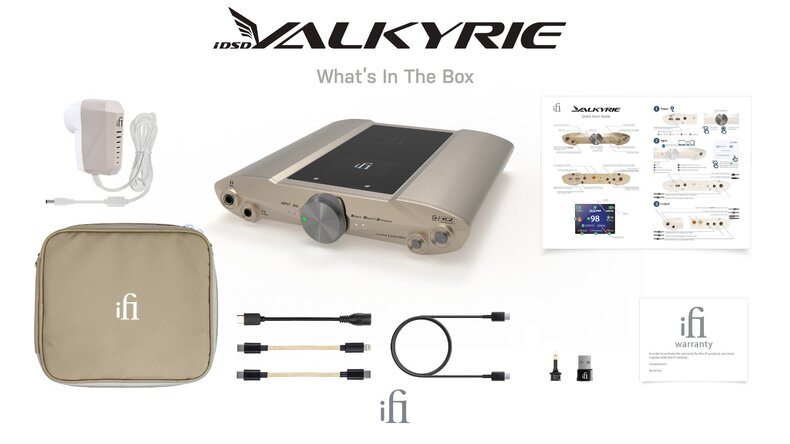
Features
- Quad-stack (4x) DAC configuration enables exceptional resolution
- Studio grade Crysopeia FPGA Remastering Engine
- Ultra-res digital audio – 32-bit/768kHz PCM, DSD512
- Features JVCKENWOOD’s K2HD Technology
- Up to 5,700mW max. peak output power
What's in the Box?
- iFi iDSD Valkyrie DAC/Amp
- USB-C OTG Cable
- USB-C to Lightning Cable
- USB-C to USB-C Cable
- DC to USB-C Cable
- Toslink Optical Adapter
- USB-C to USB-A Adapter
- iPower Power Supply
- Custom-made travel case
- Nordic engraved presentation box
- Valkyrie User Manual
- Valkyrie Quickstart Guide
| Parameter | Specification |
|---|---|
| Physical Specifications | |
| Dimensions | 172 x 160 x 30mm (6.8" x 6.3" x 1.2") |
| Net Weight | 882g (1.94 lbs) |
| Technical Specifications | |
| Hi-Res Audio Support | PCM 768kHz Native DSD512 with DSD1024 Remastering |
| Digital Filters | Bit Perfect, Standard, Minimum, GTO Apodising, Transient Aligned 'K2' mode, 'K2HD' mode |
| Signal-to-Noise Ratio | Line Output: 116dBA |
| Dynamic Range (DNR) | Line Output: 116dBA |
| THD+N | Line Output: 0.002% (20–20kHz) |
| Audio Specifications | |
| Maximum Output Power (4.4mm) | 13.5V/5,700mW @ 32Ω 19.6V/640mW @ 600Ω |
| Maximum Output Power (3.5mm) | 8.9V/2,475mW @ 32Ω 9.8V/160mW @ 600Ω |
| RMS Output Power (4.4mm) | 12.0V/2,250mW @ 64Ω 19.6V/640mW @ 600Ω |
| RMS Output Power (3.5mm) | 8.5V/2,258mW @ 32Ω 9.8V/160mW @ 600Ω |
| Output Impedance (Headphone) | ≤ 0.3Ω (4.4mm) ≤ 0.2Ω (3.5mm) |
| Output Impedance (Line) | 205Ω (4.4mm) 105Ω (3.5mm) |
| Connectivity Specifications | |
| Digital Inputs | USB-C S/PDIF (Coaxial/Optical) Bluetooth 5.4 |
| Analog Inputs | Balanced 4.4mm Single-Ended 3.5mm |
| Headphone Outputs | Balanced 4.4mm S-Balanced 3.5mm |
| Analog Outputs | Balanced 4.4mm 2× Single-Ended 3.5mm RCA |
| Bluetooth Formats | aptX Lossless, aptX Adaptive, aptX LDAC, LHDC/HWA, AAC, SBC |
| Power Specifications | |
| Battery | Lithium-Polymer 20,000mAh |
| Charging | PD/QC3.0 @ 20V QC2.0 @ 5–12V |
| Power Consumption | Nitro: 13W Turbo: 6.5W Normal: 3.5W xMEMS: ≤ 6.1W |
| Warranty Information | |
| Limited Warranty | 12 months* |








